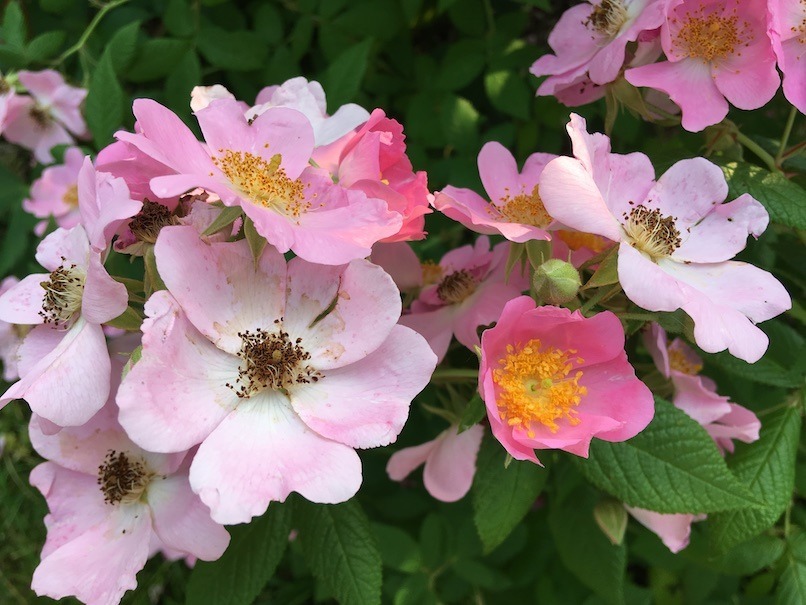The prairie rose, Rosa setigera, is a native that dodges budworms by budding up after the budworms have hatched and are munching on nonnative ornamental roses.
This year it stayed chilly well into May, delaying both budworms and rosebuds. The prairie rose made the most of our unusually wet weather by putting out several new canes. It seems to be quite happy in a high spot in the rain garden on the east side of the house, where there is plenty of morning and early afternoon sun.
By late June, it was covered with sprays of flowers. I did not really expect this rose to be splashy, but it is. It stops people in their tracks.

The roses lasted about three weeks, keeping both bumblebees and metallic green bees very busy. I cannot say whether this rose attracts honeybees—I have seen only two honeybees this summer, despite having several plants highly attractive to bees—but that’s a story for another post.
Maintaining the Prairie Rose
This plant has proved easy to maintain: I clip any long canes that reach the sidewalk—it’s a thorny rose. Since the plant is still quite young, I trimmed off all the nascent rosehips last week to keep the energy going into roots and foliage. I will let the hips mature next year and see if the birds go after them.
Managing Budworm
The prairie rose’s flower buds dodge budworms by not being there during egg-laying. As for managing budworm on nonnative roses, I watch the first round of flower buds on my nonnatives, and pick off those that have been infested with budworm. The first couple of years that I did that I had to wait for the next round of buds to have flowers. After doing this for a few years, about half of the first round of buds bloom unscathed.